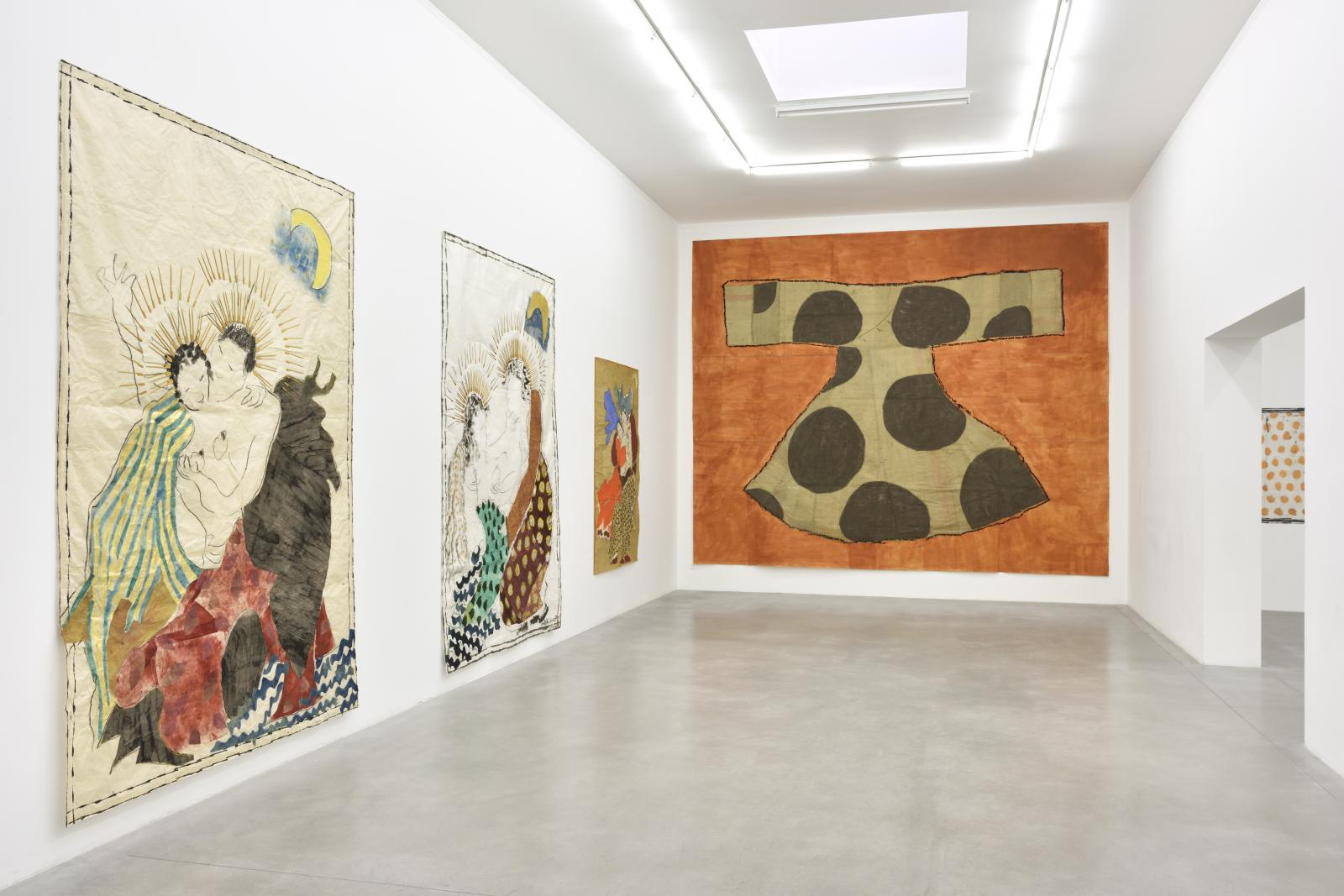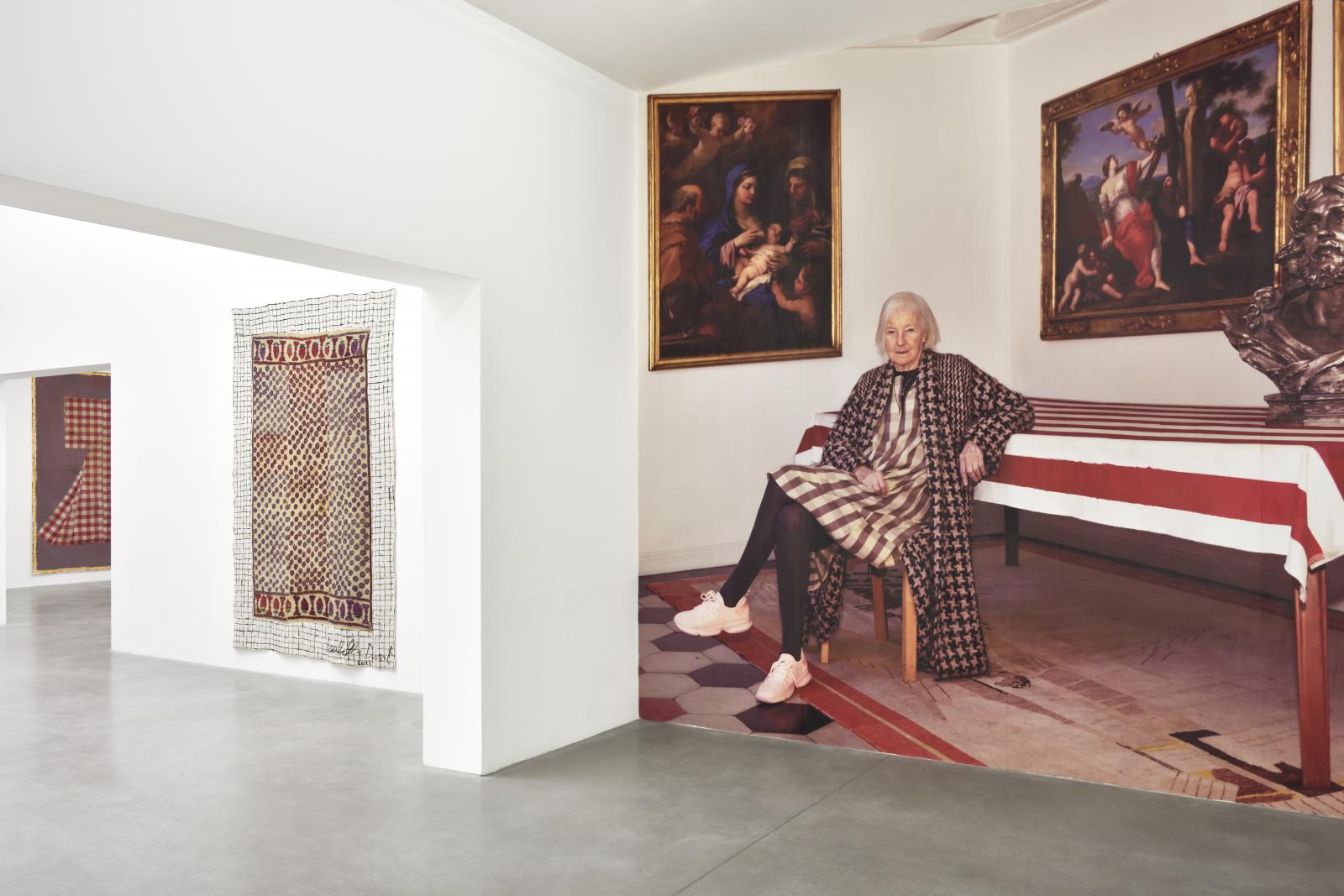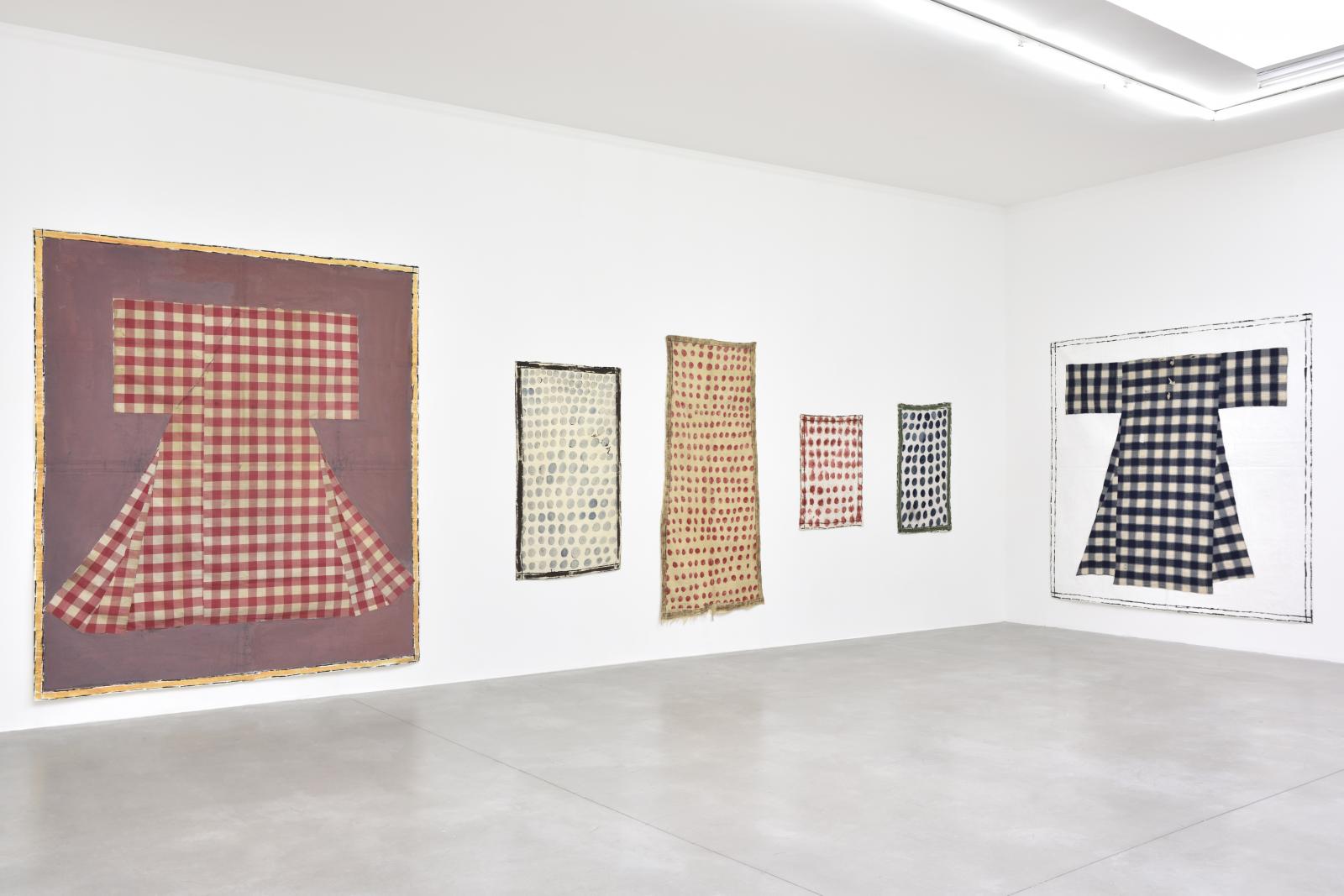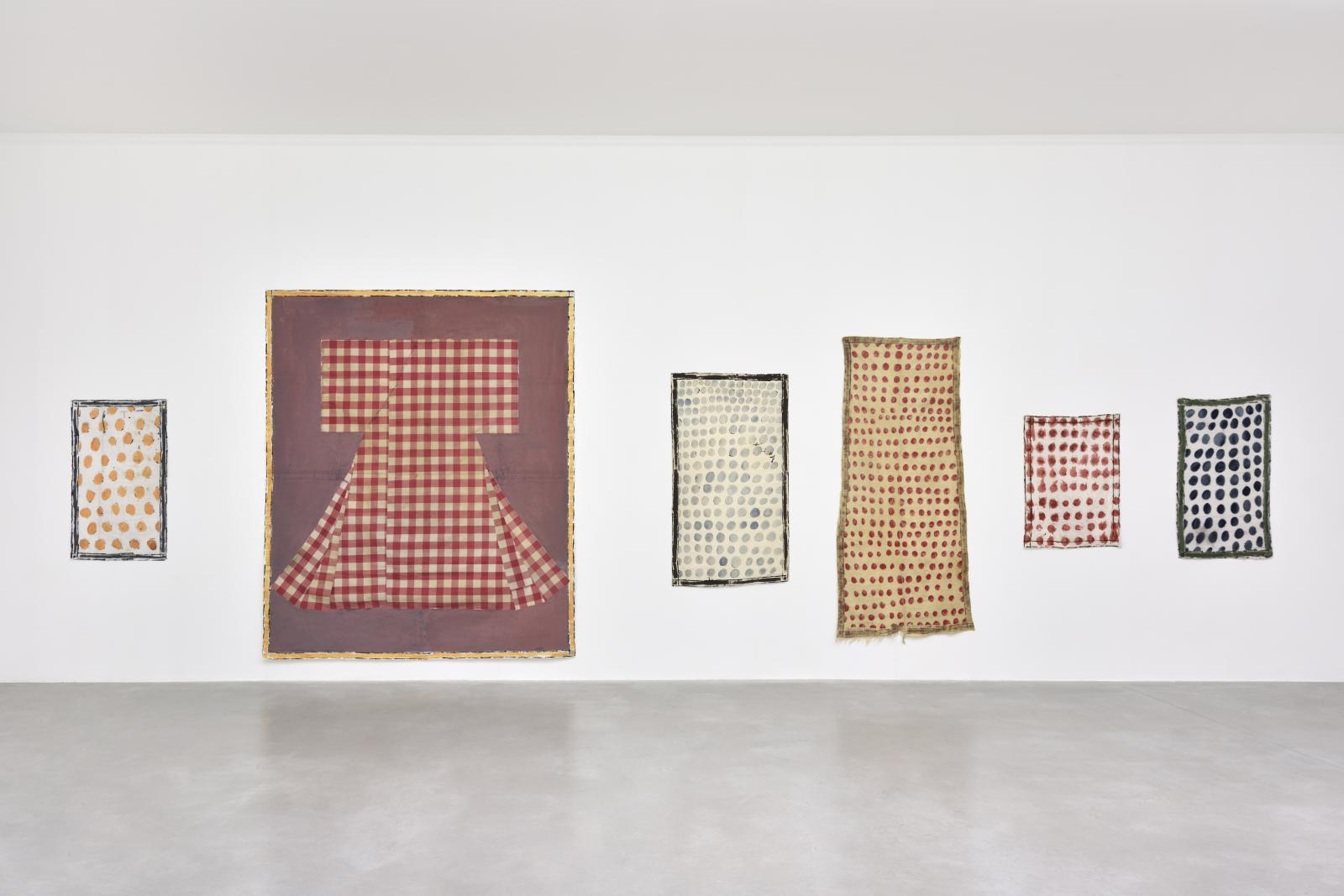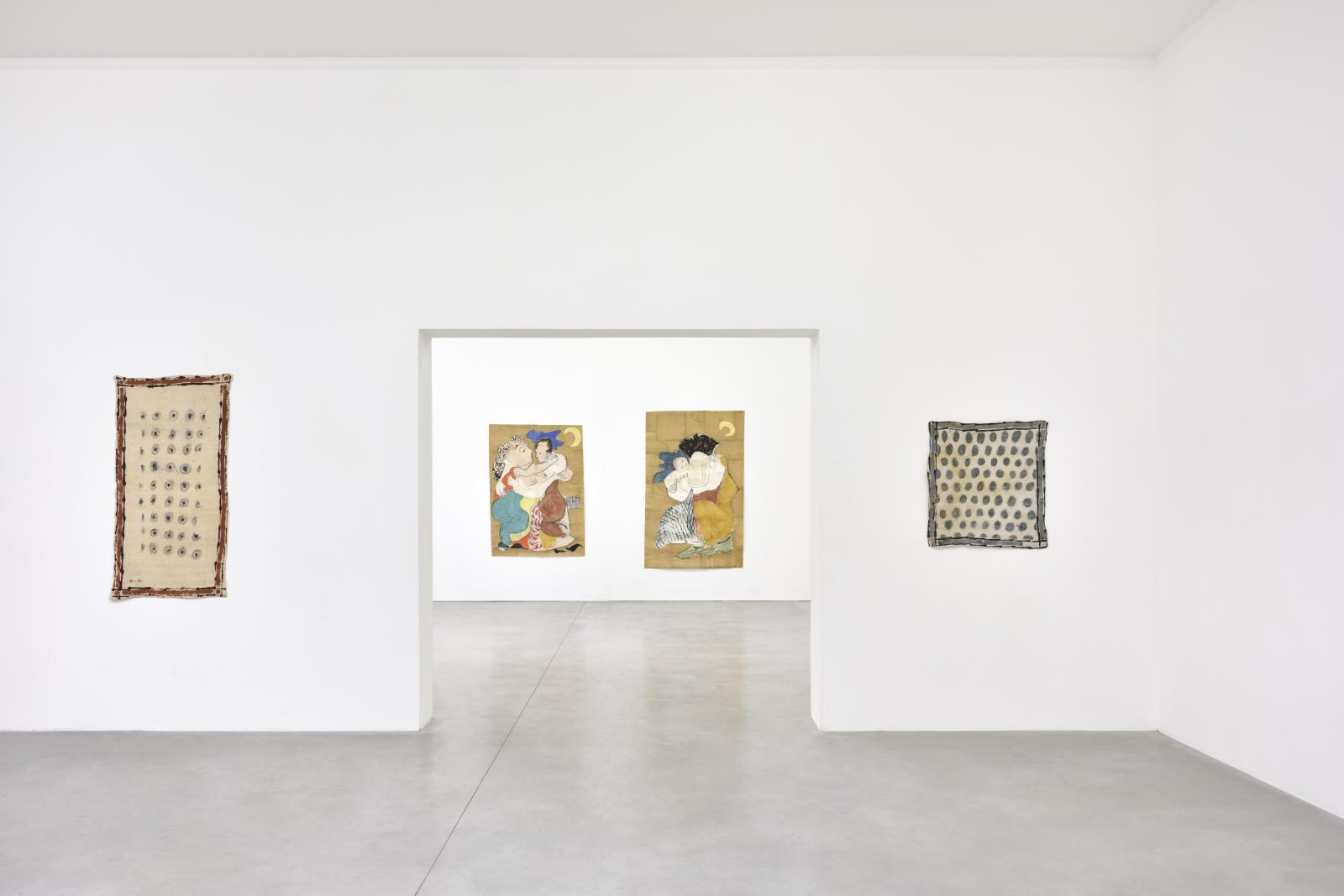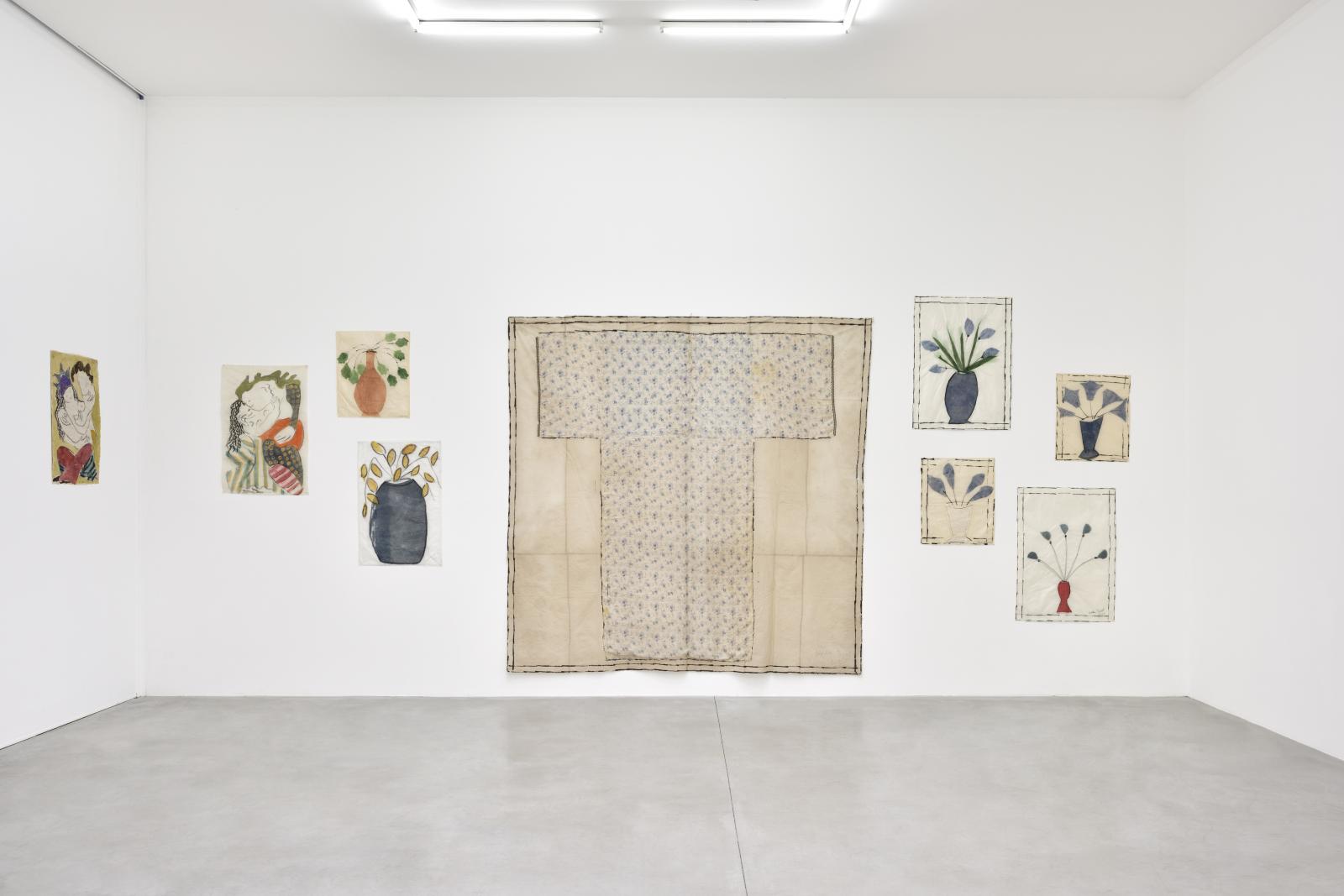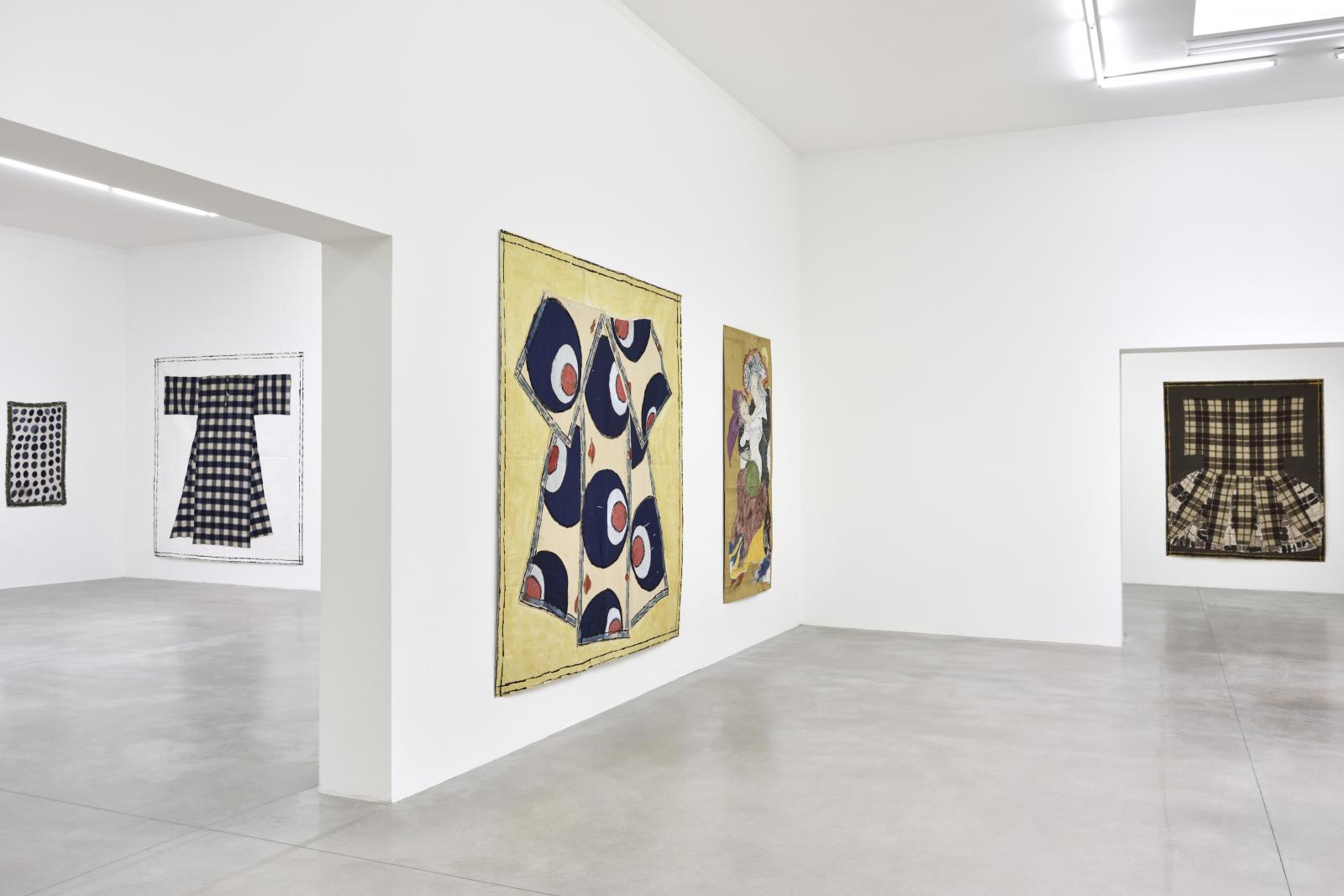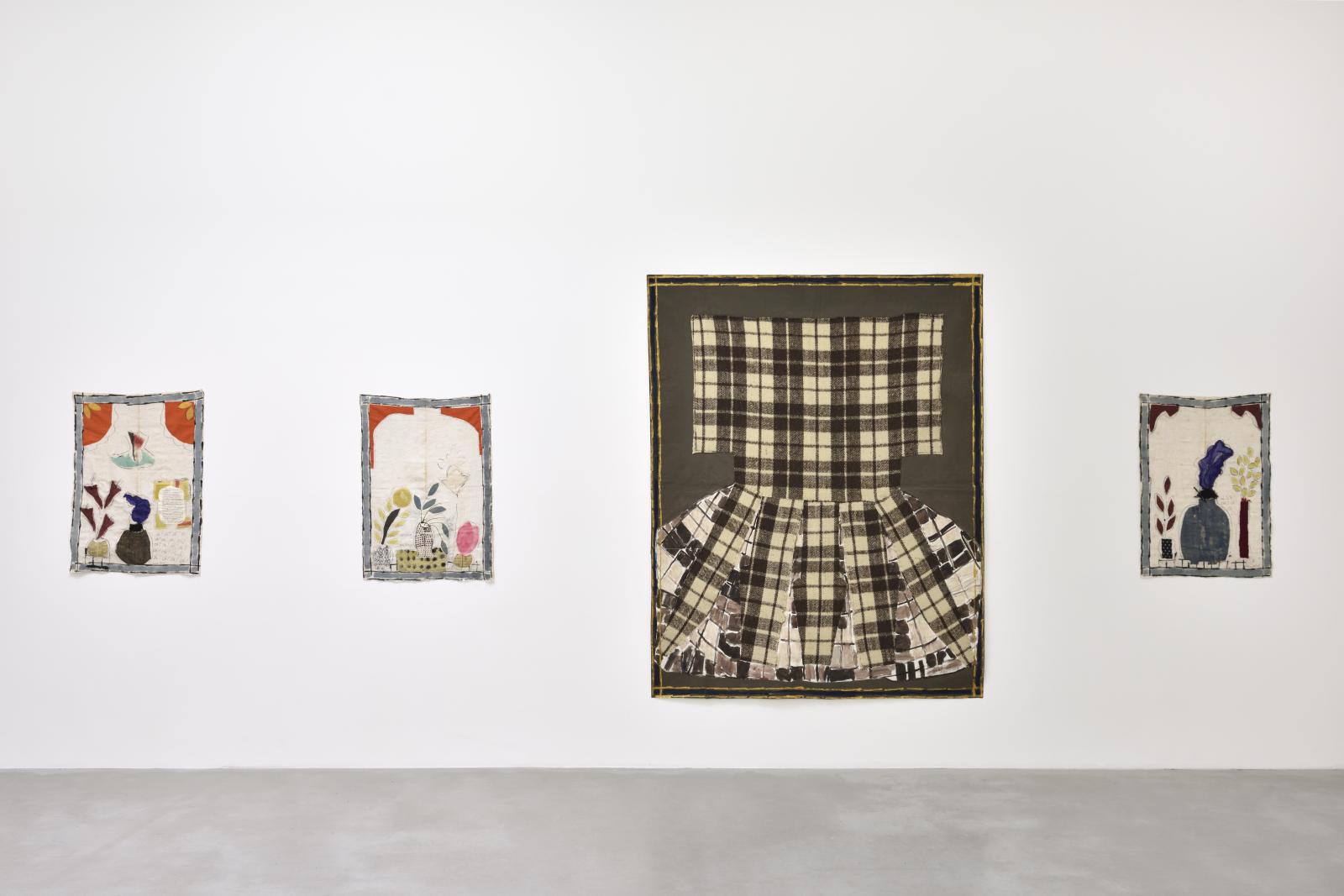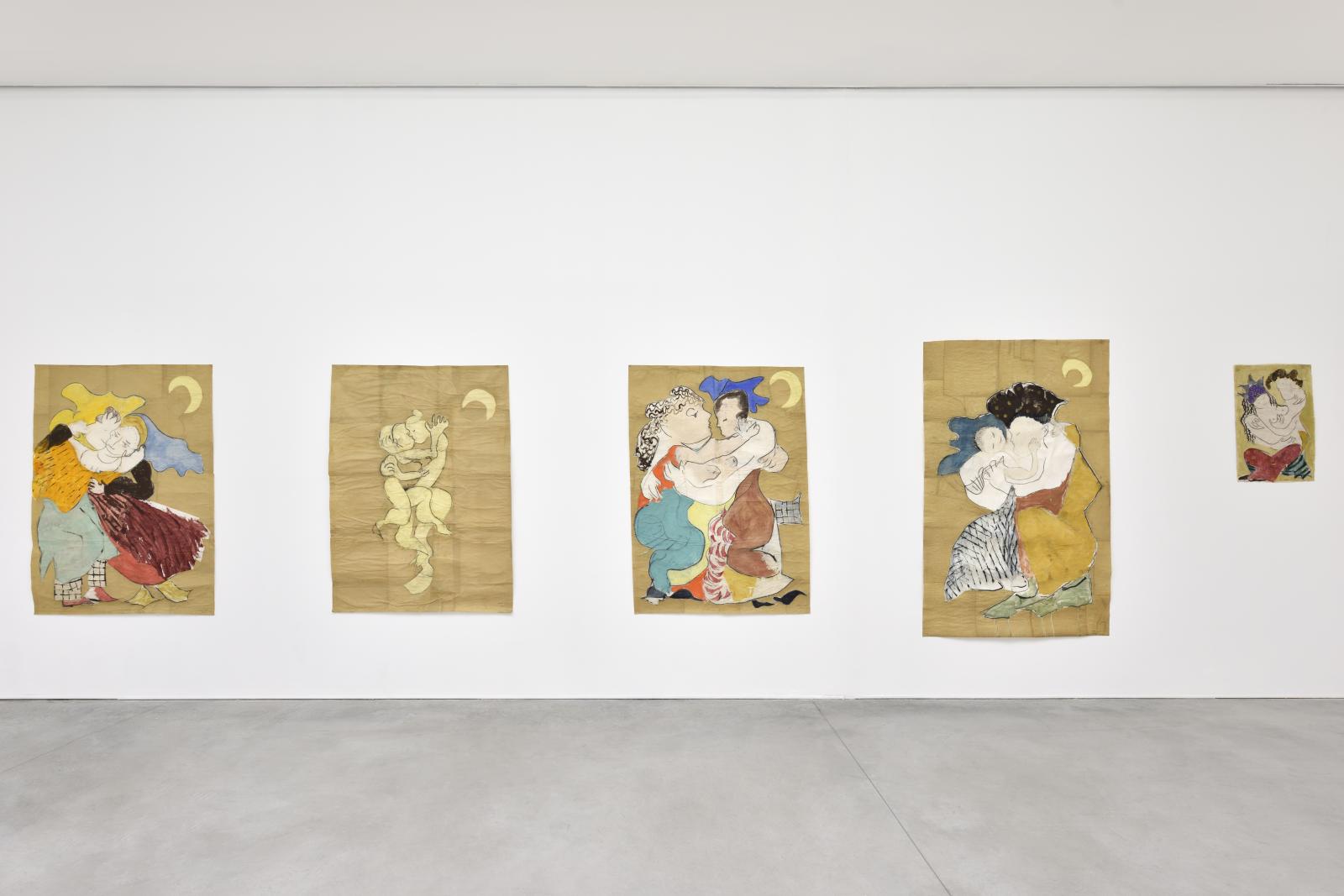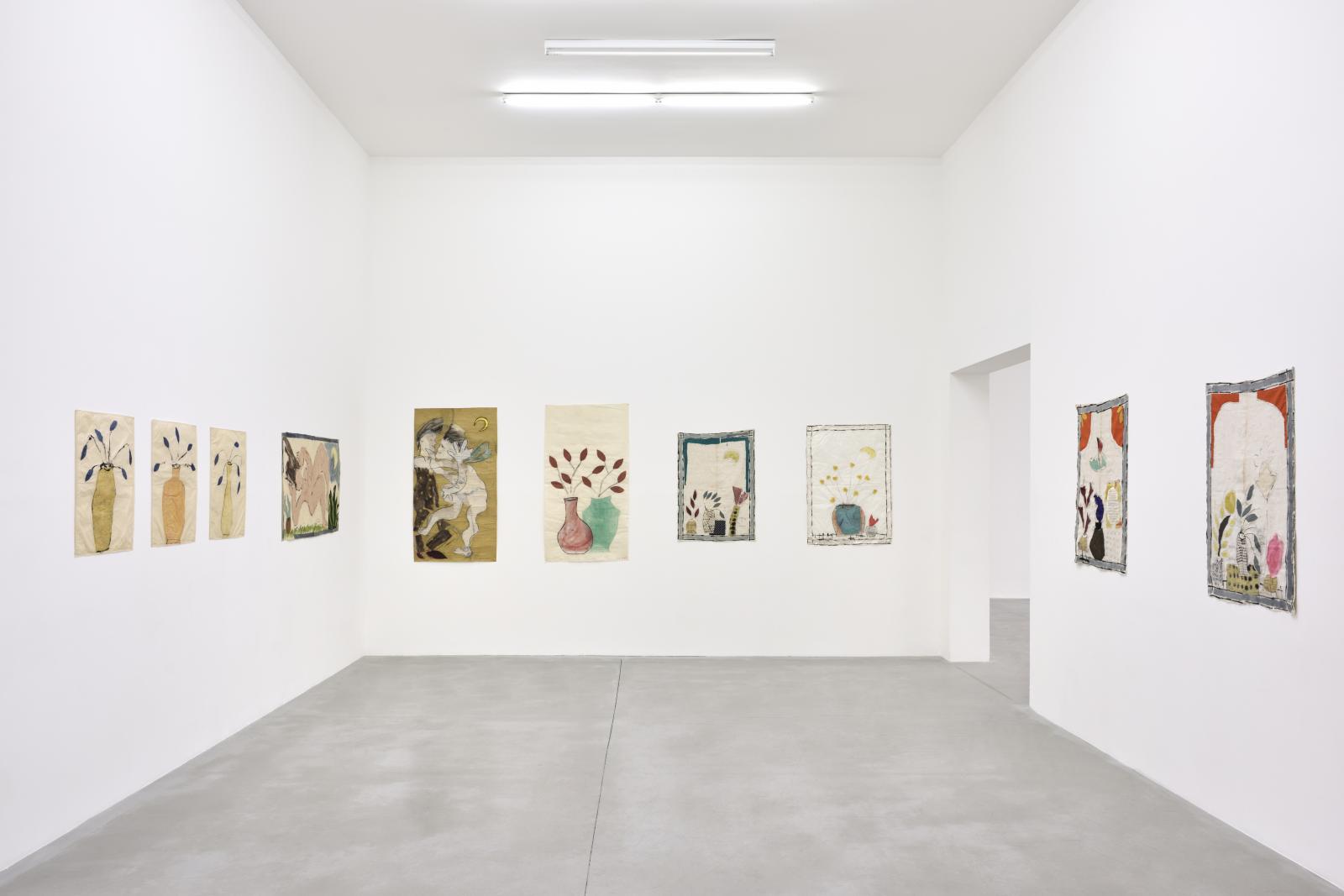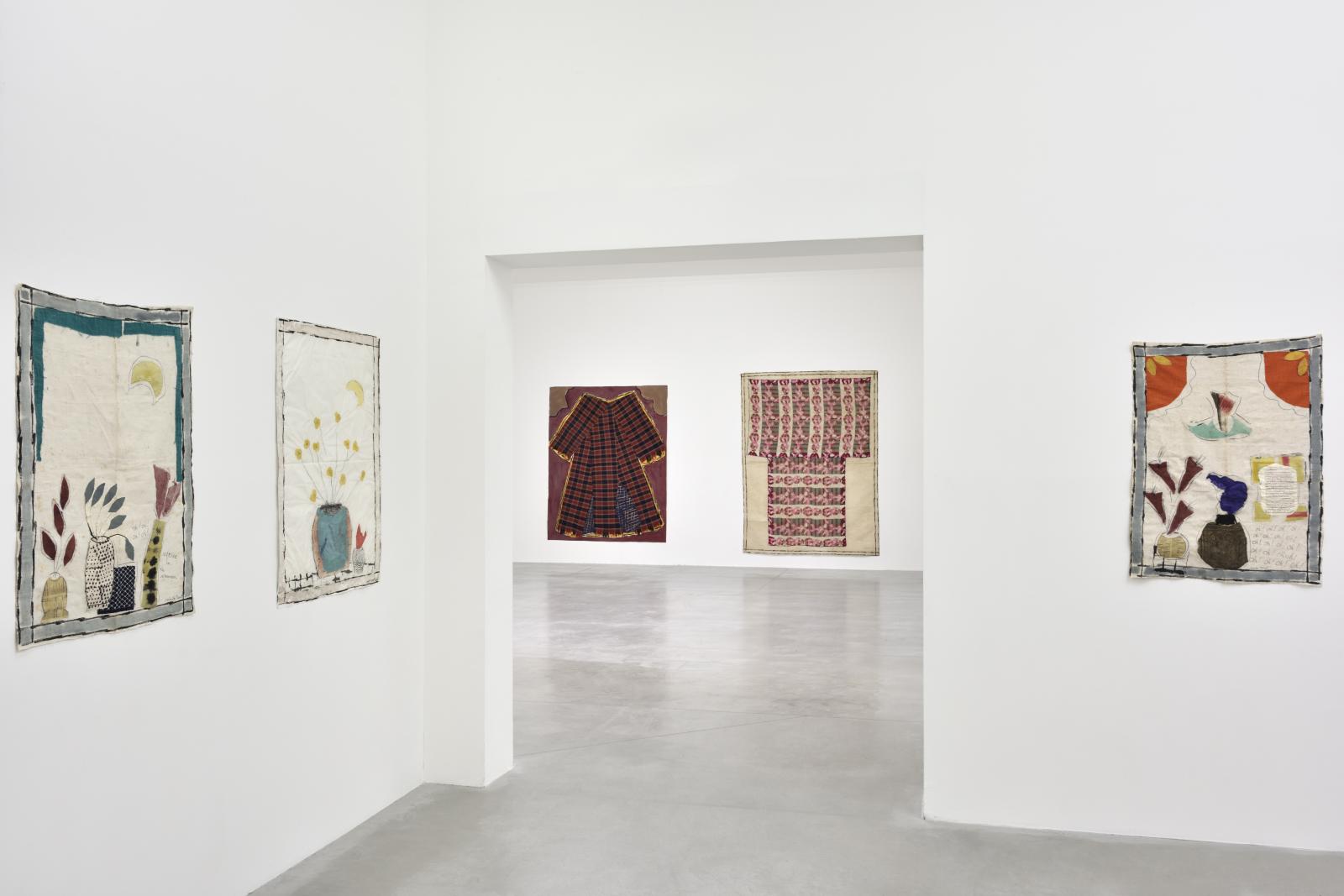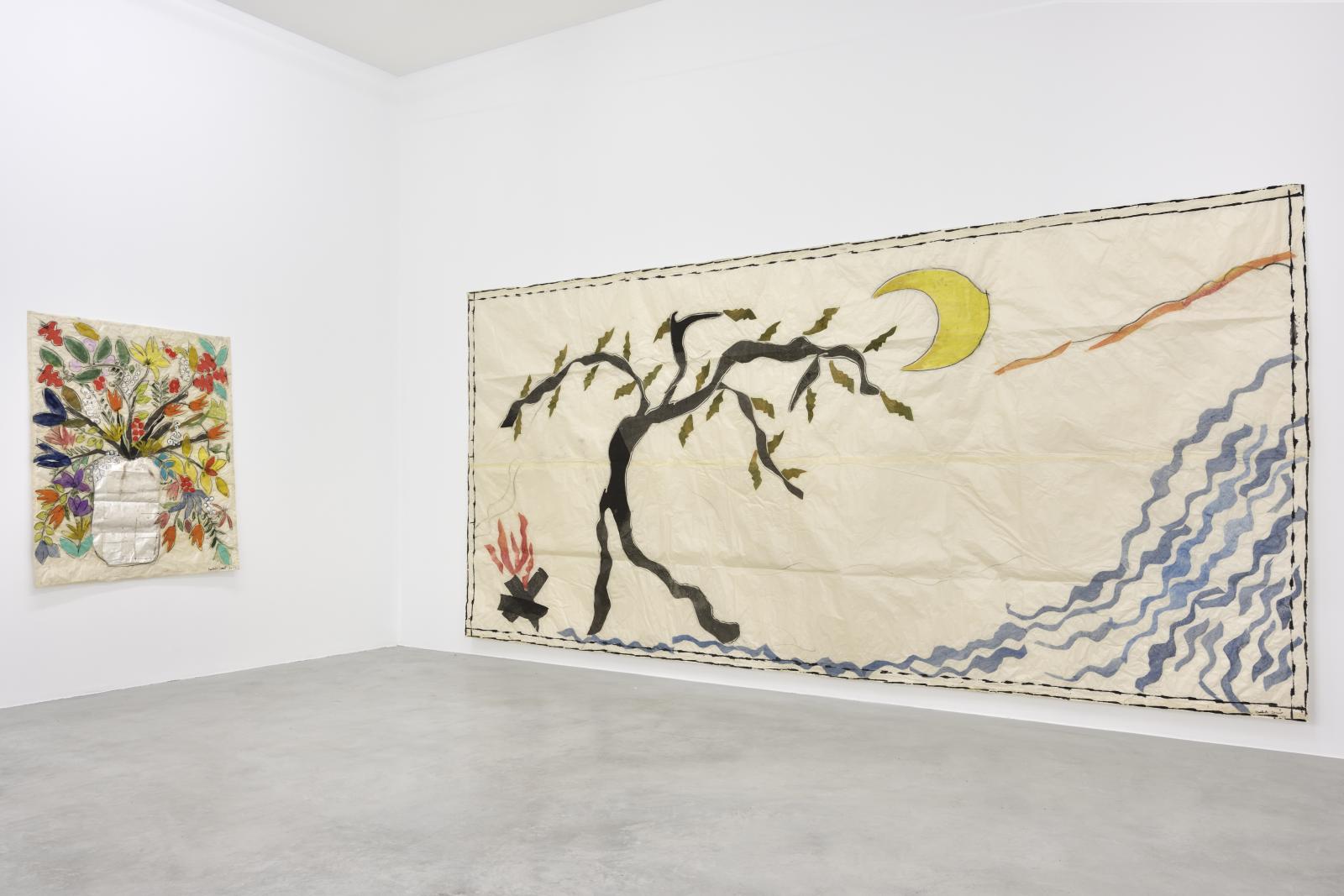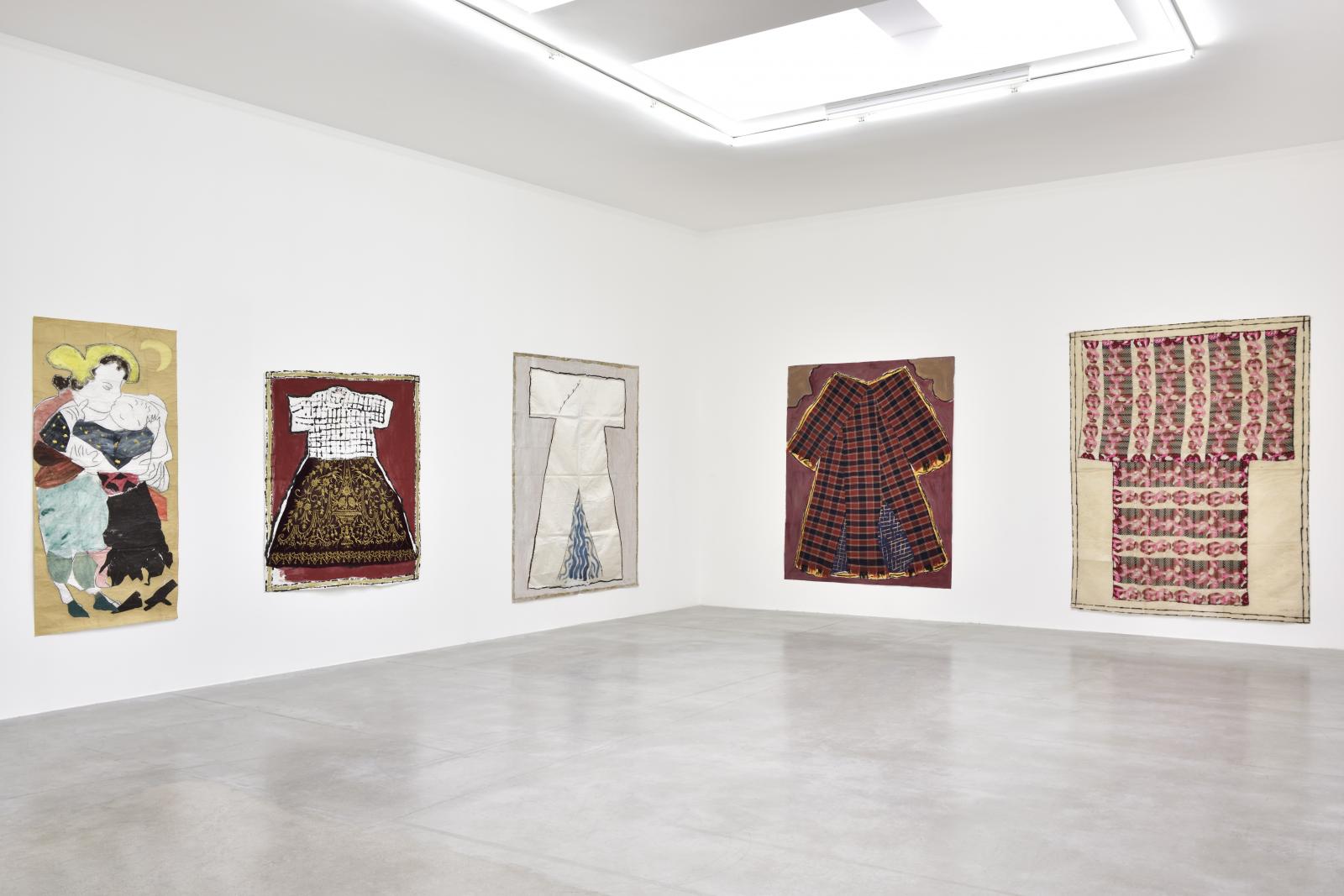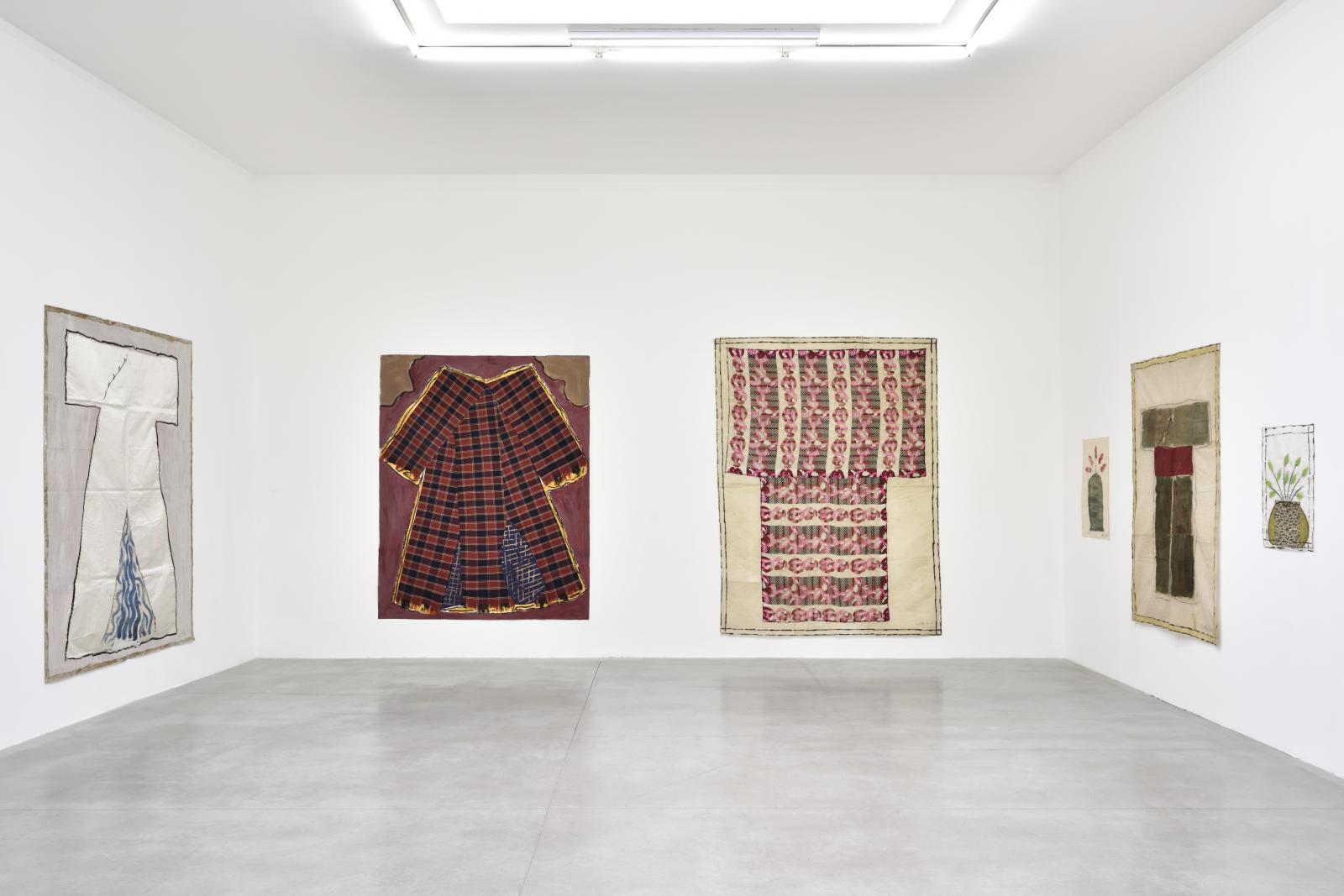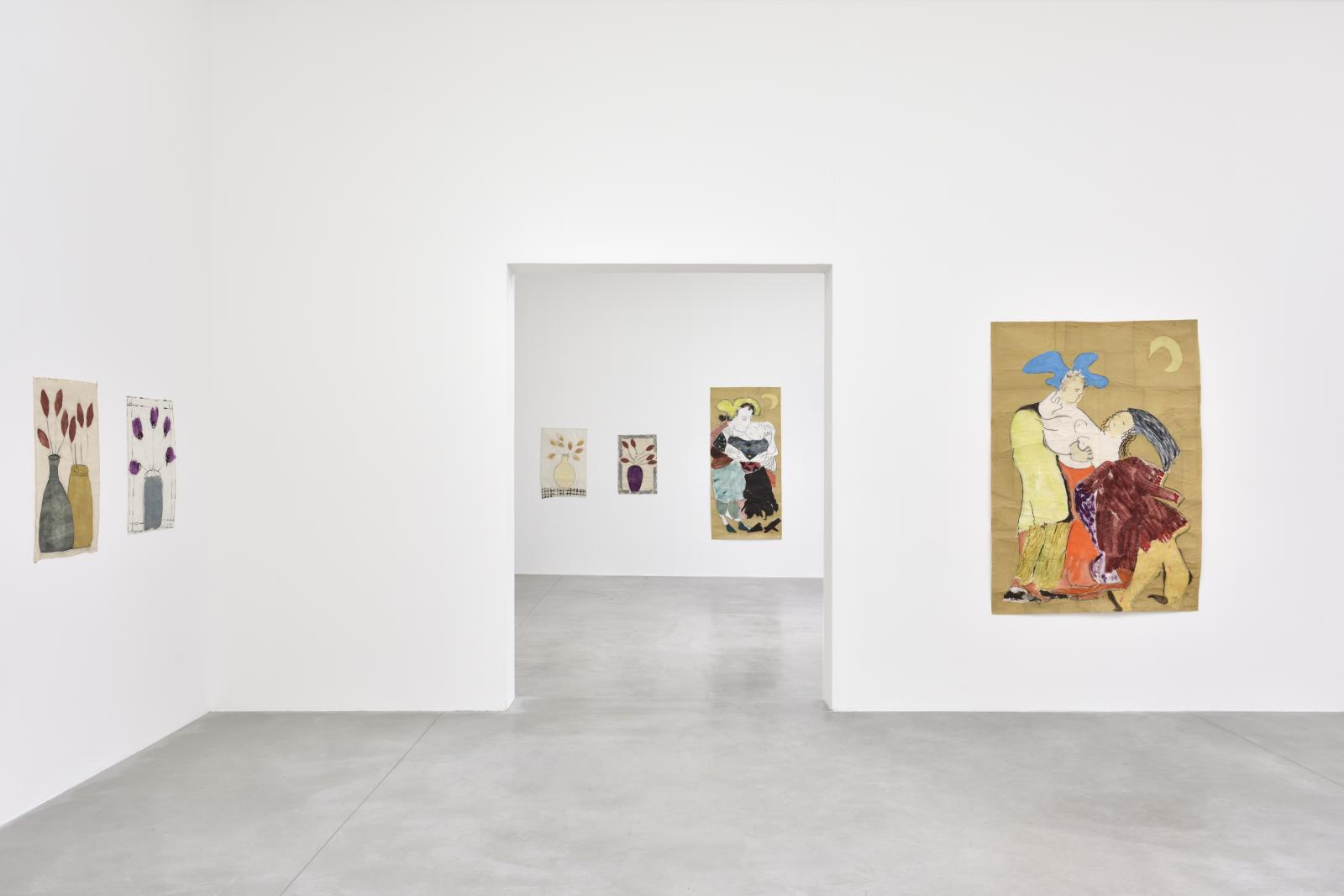Isabella Ducrot
Profusione
Born in 1931 in Naples, Italia. Lives and works in Rome, Italia.
Acknowledgements: Gisela Capitain, Cologne
In old age, you can have courageous feelings and free gestures
Born in Naples, Italy, in 1931, Isabella Ducrot is a young artist with a young career. Like many women of her generation, she moved into art after raising her children. Her formative years were marked by continuous travels with her late husband, during which they amassed hundreds of Persian miniatures and rare antique textiles of many kinds.
Surrounded by a collection featuring baroque paintings by artists such as Battistello Caracciolo, Carlo Dolci, Artemisia Gentileschi, and Luca Giordano, alongside dozens of cheerful Persian and Indian miniatures, as well as fragments of 17th-century rugs and other historical fabrics, Isabella Ducrot faced a real and demanding opportunity to build her own body of work. She took up the challenge a few decades ago, transcribing stories and quotations on paper, fabrics, and collages.
Over the years, she has created a large number of daring artworks—smooth, translucent, colorful, and/or strictly minimalist—depicting landscapes and couples in tender love, for instance.
As she once wrote, “you can make a drawing of two people in love, but the tenderness doesn’t always come out. I’m trying to make tenderness come out, tenderness and the possibility of touch.”
Flowers in pots, teapots, and other kimono-shaped collages are securely stored in large drawers in her Rome studio on the ground floor of Palazzo Doria Pamphilj, where she also lives.
The choice of a particular type of Japanese paper to brush over with black and colored inks—ductile but strong, light, soft, and often used for restoration purposes— led her to develop her fa presto technique, brushing black and colored inks over the surface—a nod to her beloved Luca ‘Fa Presto’ Giordano in the hall of her flat.
Like on many hand-knotted rugs, the plain field is home to motifs and patterns and its borders are geometrical, marked by a double line in dark ink, or sometimes in washed grey or light orange/pink. Just as streets have sidewalks, rugs have borders. Isabella Ducrot’s pieces share these distinctive boundaries. Are they simply a passage from the floor to the wall—from the rug to the tapestry? Or are they windows open onto the world? Maybe a bit of both.The floor is pedestrian and domestic and displaying rugs on the ground offers allocated territories and a use for each of them. Walls are sight oriented, decorative, and builders of space, their sturdiness and opacity paradoxically bear openness and endlessness.
Isabella Ducrot was “discovered” by German gallery owner Gisela Capitain. She went on to gain international visibility with a few solo shows during the last decade, and a presentation at the London gallery Sadie Coles last year.
The Italian artist has provided us with the opportunity to showcase a significant collection of her work on paper, fabrics and collages that she produced over the last five years. Additionally, new pieces have also been created specifically for the exhibition.
— Franck Gautherot & Seungduk Kim
